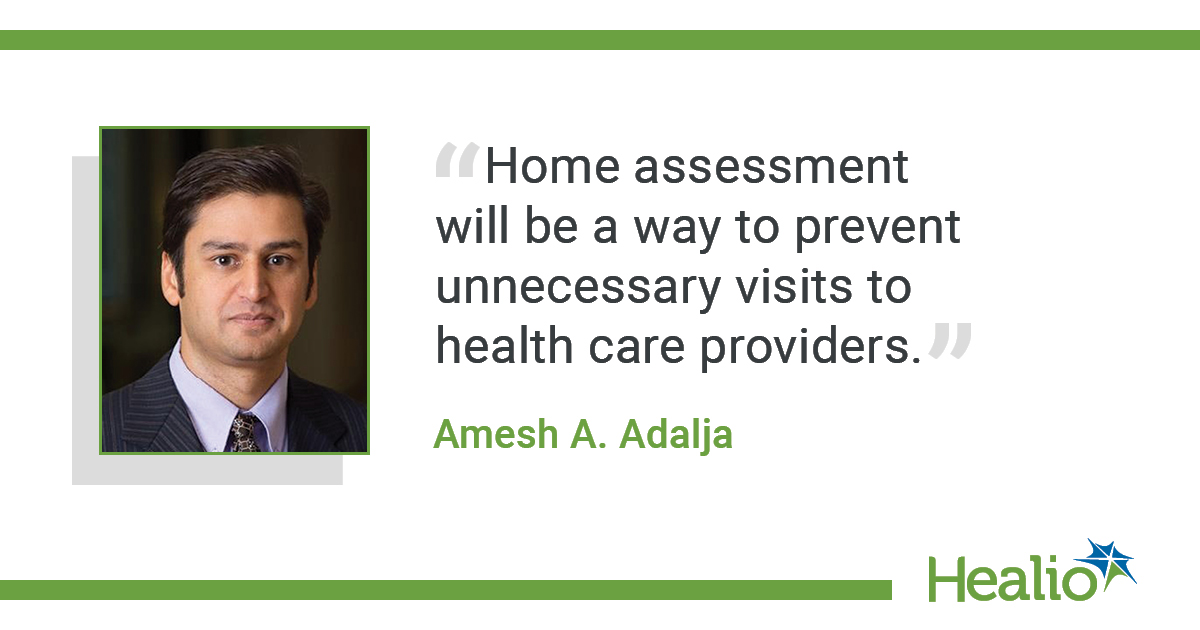Home assessment team accurately identifies COVID-19, reduces health system exposure
Click Here to Manage Email Alerts

Home assessment teams, or HATs, for patients who need to be evaluated for COVID-19 but do not require hospitalization or emergency medical care may provide useful real-time clinical information about potentially infected individuals, according to a recent study published in Clinical Infectious Diseases.
“Safe evaluation of persons for suspected infection with a special pathogen (including SARS-CoV-2) in the traditional health care environment is costly and resource intensive,” Chloe Bryson-Cahn, MD, assistant professor in the University of Washington’s department of medicine’s division of allergy and infectious diseases, and colleagues wrote. “It requires specialized rooms, use of personal protective equipment (PPE), monitored donning and doffing, logistically complicated patient transportation from the community to the health care facility and back (typically through emergency medical services) and appropriate decontamination of transport and hospital environments. Additionally, evaluating a patient for emerging pathogens in a health care setting runs the risk of exposing patients and staff to infection.”
Bryson-Cahn and colleagues identified patients with possible exposure to COVID-19, also know as SARS-CoV-2, via public health or a call to any part of the University of Washington health care system. If a patient met CDC testing criteria, the public health team established the necessity of a HAT visit and COVID-19 field testing. Once that determination was made, a member of the HAT called the patient to ensure that the patient was safe to visit: breathing comfortably, able to eat and drink and moving around the home.
Each HAT included a physician, a nurse, one or more trained PPE observers and a site commander. The physician and nurse enter the patient’s home in PPE as recommended by the CDC, using standard, contact and airborne precautions with eye protection. The physician’s evaluation included a focused history and a physical exam. Specimens for COVID-19 testing, including nasopharyngeal and oropharyngeal swabs and sputum if appropriate, are taken; testing was to be performed by the CDC or Washington State Department of Health laboratory. An additional nasopharyngeal swab is obtained for viral respiratory pathogen testing, including influenza, at the University of Washington Virology Laboratory.

HATs have so far performed 15 community-based assessments, including in single-family homes and commercial properties where patients are isolated. All patients assessed were determined to be clinically stable and able to remain out of the hospital, with no patients needing subsequent hospitalization.
“Home assessment will be a way to prevent unnecessary visits to health care providers and decrease the amount of social interaction suspected patients have to undertake,” Amesh A. Adalja, MD, senior scholar at Johns Hopkins Center for Health Security, told Healio. “I believe it can be effective and may be a way to rapidly identify those who are infected and have them self-isolate. Rapid identification and self-isolation are the key to control of this virus.”
This study represents the first hospital team-based COVID-19 assessment program to examine patients outside of the traditional health care setting in the United States, according to Bryson-Cahn and colleagues.
“This model benefits both the public health and clinical health care systems by increasing safety and efficiency while reducing the costs and complexity of SARS-CoV-2 testing for patients who do not require emergency evaluation or hospitalization,” the authors wrote. “Given concerns with health care exposures and health care-associated outbreaks with SARS-CoV-2, as well as historical experiences with SARS-CoV and MERS-CoV transmission in health care settings, minimizing the exposure risk to clinics, emergency departments and hospitals is crucial.” – by Eamon Dreisbach
Disclosure: Adalja reports no relevant financial disclosures. Bryson-Cahn and colleagues report no relevant financial disclosures.

